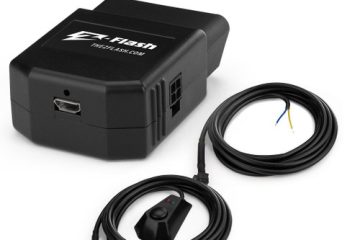Federal Poverty Guidelines impact millions of Americans every year. Bu[1] t what are they? How do they determine whether you can access a critical program like Lifeline? You might think eligibility for a service as vital as affordable communication depends on complex criteria. But it all boils down to one thing—income.
Specifically, the Federal Poverty Guidelines set thresholds that adjust every year to define who qualifies. These numbers dictate the lifeline income limits, determining who gets access and who doesn’t. It’s the line between staying connected or missing out. Let’s dive into how these shape Lifeline’s income limits.
What are the Federal Poverty Guidelines?
The Federal Poverty Guidelines are numbers set by the U.S. government to measure income thresholds across different household sizes. Simply put, they are a yardstick to assess who is considered “low-income” across the country. Every year, the Department of Health and Human Services (HHS) updates these guidelines to reflect shifts in the economy, inflation, and other critical factors. They serve as the foundation for determining who qualifies for various federal and state assistance programs, including Lifeline.
How Do These Guidelines Impact Lifeline Eligibility?
You might be wondering, how does all this tie into Lifeline? It’s simple. To qualify for Lifeline, your household income must fall at or below a specific percentage. Typically, this percentage hovers around 135%, meaning your income can be slightly above the poverty level, yet you’re still eligible. Why? Because being just over the poverty line doesn’t suddenly make life affordable. The system understands this.
Household Size and Its Role in Determining Income Limits
Household size plays a crucial role in shaping these limits. The Federal Poverty Guidelines increase income limits based on the number of people in your household. A family of five doesn’t have the same expenses as an individual, so the guidelines account for this difference. Lifeline’s income limits, therefore, aren’t one-size-fits-all. They expand with your household, ensuring larger families have a better shot at qualifying.
Annual Updates and Their Impact on Eligibility
The Federal Poverty Guidelines are not set in stone. Each year, they are updated to reflect economic changes, such as inflation or the overall cost of living. These annual updates ensure that Lifeline remains relevant and accessible to those who need it most. As prices rise, the guidelines shift, preventing the system from becoming outdated.
Programs That Qualify Based on Federal Poverty Guidelines
It’s not just income that can qualify you for Lifeline. Many programs use the Federal Poverty Guidelines to set their own thresholds. Programs like Medicaid, SNAP, and Federal Public Housing Assistance often use the same income levels. If you qualify for one of these, you may automatically qualify for Lifeline. The interconnectedness of these programs streamlines the process for low-income individuals, ensuring they don’t have to jump through multiple hoops to get the help they need.
The Role of Documentation in Verifying Income Eligibility
Verifying income eligibility is straightforward, but it requires documentation. Whether it’s pay stubs, tax returns, or proof of participation in a qualifying program, the process demands accuracy. The Federal Poverty Guidelines provide a clear benchmark, but it’s up to you to prove you meet them. Luckily, the system is designed to make this verification as painless as possible, ensuring that those who qualify can access their benefits without unnecessary hassle.
In the end, the Federal Poverty Guidelines aren’t just arbitrary numbers. They play a pivotal role in setting lifeline income limits and ensuring those most in need can access affordable communication services. By adjusting for household size and annual cost-of-living changes, the guidelines ensure fairness in the system.
Content Quality Form
Content Proof checked by: Suman Haryani
Relevancy:
Related to the client’s products or services (Yes)
No Review type content (Yes)
Relevant to the target link included in the article (Yes)
Topic:
Topic should be editorial and related to the brand’s product or service (Yes)
Content should not be overly promotional about the brand’s product or service (Yes)
Quality (Yes)
Written in US English (Yes)
No grammar, spelling errors, run on sentences, etc. (Yes)
Minimum 500 words (Yes)
Tense, POV maintained across the content (Yes)
Links:
Link is geo-focused; content should be related to that geo. Ex: if the link is about a specific location, the content should also be related to that location (Yes)
Link is not out of place with the content (Yes)
Link should appear as early in the content as possible (Yes)
Only include the 1 brand link provided (i.e. do not add additional links to the client’s other pages or homepage unless specified) (Yes)
Anchor Text:
Matches exactly with what is provided (pay attention to intentional misspellings and upper/lowercase) (Yes)
Flows naturally into the sentence and not be awkwardly stuffed in other links (Yes)
Included at least 1 outbound relevant link to non-competitor sites (Yes)
Included at least 1 internal relevant link within the shortlisted site (Yes)
Anchor text is relevant to the page it’s linking to (Yes)
Disclosure
Not written as if the client wrote it, do not use terms like “we” and “us” (Yes)
Relevant Image included (No)



